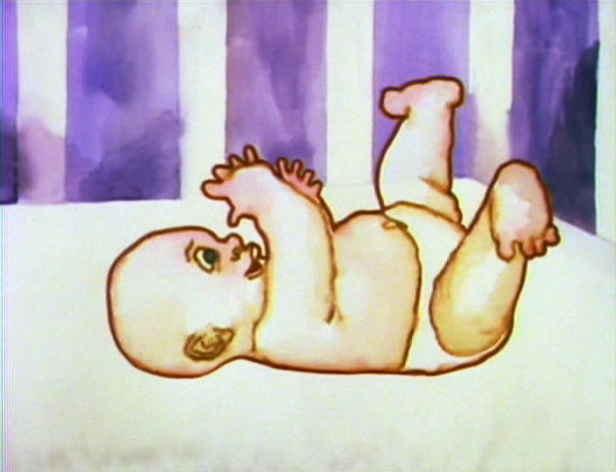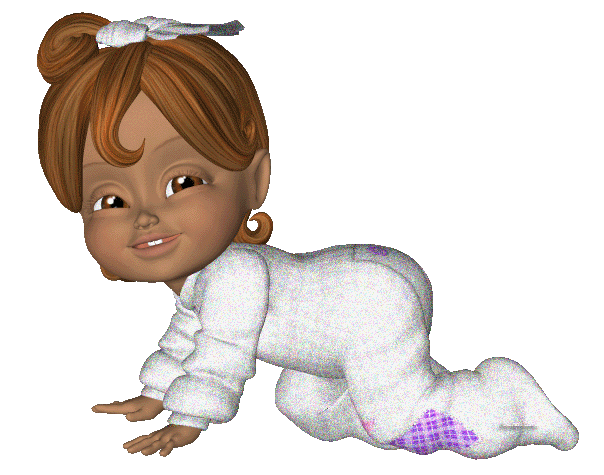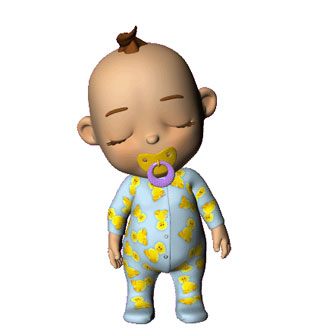Baby Animated Definition
Source(google.com.pk)
This category contains 61 animations. Feel free to browse through all of the animations and click on the ones you'd like to download, add to favorites or send as a great looking digital postcard.Suspended animation is the slowing of life processes by external means without termination. Breathing, heartbeat, and other involuntary functions may still occur, but they can only be detected by artificial means. Extreme cold can be used to precipitate the slowing of an individual's functions; use of this process has led to the developing science of cryonics. Cryonics is another method of life preservation but it cryopreserves organisms using liquid nitrogen that will preserve the organism until reanimation. Two-celled embryos have been kept in suspended animation for as long as 13 years.[1][2]
Placing astronauts in suspended animation has been proposed as one way for an individual to reach the end of an interstellar or intergalactic journey, avoiding the necessity for a gigantic generation ship; occasionally the two concepts have been combined, with generations of "caretakers" supervising a large population of frozen passengers.[citation needed]
Since the 1970s, induced hypothermia has been performed for some open-heart surgeries as an alternative to heart-lung machines. Hypothermia, however, provides only a limited amount of time in which to operate and there is a risk of tissue and brain damage for prolonged periods.In June 2005 scientists at the University of Pittsburgh's Safar Center for Resuscitation Research announced they had managed to place dogs in suspended animation and bring them back to life, most of them without brain damage, by draining the blood out of the dogs' bodies and injecting a low temperature solution into their circulatory systems, which in turn keeps the bodies alive in stasis. After three hours of being clinically dead, the dogs' blood was returned to their circulatory systems, and the animals were revived by delivering an electric shock to their hearts. The heart started pumping the blood around the frozen body, and the dogs were brought back to life.[3]
On 20 January 2006, doctors from the Massachusetts General Hospital in Boston announced they had placed pigs in suspended animation with a similar technique. The pigs were anaesthetized and major blood loss was induced, along with simulated - via scalpel - severe injuries (e.g. a punctured aorta as might happen in a car accident or shooting). After the pigs lost about half their blood the remaining blood was replaced with a chilled saline solution. As the body temperature reached 10 °C (50 °F) the damaged blood vessel was repaired and the blood was returned.[4] The method was tested 200 times with a 90% success rate. "Doctors claim suspended animation success". The Sydney Morning Herald. 20 January 2006. Retrieved 10 October 2006.An article in the 22 April 2005 issue of the scientific journal Science reports success towards inducing suspended animation-like hypothermia in mice. The findings are significant, as mice do not hibernate in nature. The laboratory of Mark B. Roth at the Fred Hutchinson Cancer Research Center in Seattle, Washington, placed the mice in a chamber containing 80 ppm hydrogen sulfide for a duration of 6 hours. The core body temperature of the mice dropped to 13 degrees Celsius and metabolism, as assayed by carbon dioxide production and oxygen use, decreased 10-fold.[5] They also induced hypoxia on nematode embryos and zebrafish embryos, placing them in suspended animation for hours, and then re-animating them simply by returning the oxygen to the embryos.
Massachusetts General Hospital in Boston announced they had been able to hibernate mice using the same method. Their heart rate was slowed down from 500 to 200 beats per minute, respiration fell from 120 to 25 breaths per minute and body temperature dropped to 30°C (natural: 39°C). After 2 hours of breathing air without hydrogen sulfide the mice returned to normal. Further studies are needed to see if the gas had damaging effects on the brain, considering the effect of hydrogen sulfide on the body is similar to hydrogen cyanide; it does not slow the metabolic rate but rather inhibits the transfer of energy within the cell via ATP.[6]
Experiments on sedated sheep[7] and partially ventilated anesthetized pigs[8] have been unsuccessful, suggesting that application to large mammals may not be feasible. In any case, long term suspended animation has not been attempted.There are many research projects currently investigating how to achieve "induced hibernation" in humans.[9][10] This ability to hibernate humans would be useful for a number of reasons, such as saving the lives of seriously ill or injured people by temporarily putting them in a state of hibernation until treatment can be given.
There are cases of accidental human hibernation. The most recent is the case of Mitsutaka Uchikoshi, a Japanese man who survived the cold for 24 days in 2006 without food or water when he fell into a hypothermic state similar to hibernation.[11]The Dancing Baby is a viral video that featured the 3D animation of a baby dancing to the “Hooked on a Feeling” by the Swedish pop group Blue Swede. In this video, the animated baby performs a cha-cha form of dance that lasts for several seconds. The Dancing Baby originated as experimental test files that used 3D character animation. It was released in 1996 by a team of developers at Character Studio. The Dancing Baby may also be referred to as the Oogachaka Baby or Baby Cha-Cha.
he Dancing Baby became an Internet phenomenon through email chains, which led to many spinoffs and parodies. Most famously, the baby was featured in the hit TV show “All McBeal” as a hallucination that the main character frequently experienced. The Dancing Baby also appeared on other movies, TV shows and commercials.The Dancing Baby was created using the 3D character animation software known as Character Studio in conjunction with 3D Studio Max. When the animated baby was first released, this 3D character animation software was considered groundbreaking. As a result, many animators sought to improve upon and create new versions of the Dancing Baby. A number of variants to this video were created, which included a rasta baby, a drunken baby, a samurai baby, and many others, but none of them were even close to the original Dancing Baby's popularity.
Baby Animated Free Pictures Images Photos Wallpaper Clipart 2013

Baby Animated Free Pictures Images Photos Wallpaper Clipart 2013

Baby Animated Free Pictures Images Photos Wallpaper Clipart 2013

Baby Animated Free Pictures Images Photos Wallpaper Clipart 2013

Baby Animated Free Pictures Images Photos Wallpaper Clipart 2013

Baby Animated Free Pictures Images Photos Wallpaper Clipart 2013

Baby Animated Free Pictures Images Photos Wallpaper Clipart 2013

Baby Animated Free Pictures Images Photos Wallpaper Clipart 2013

Baby Animated Free Pictures Images Photos Wallpaper Clipart 2013

Baby Animated Free Pictures Images Photos Wallpaper Clipart 2013


No comments:
Post a Comment